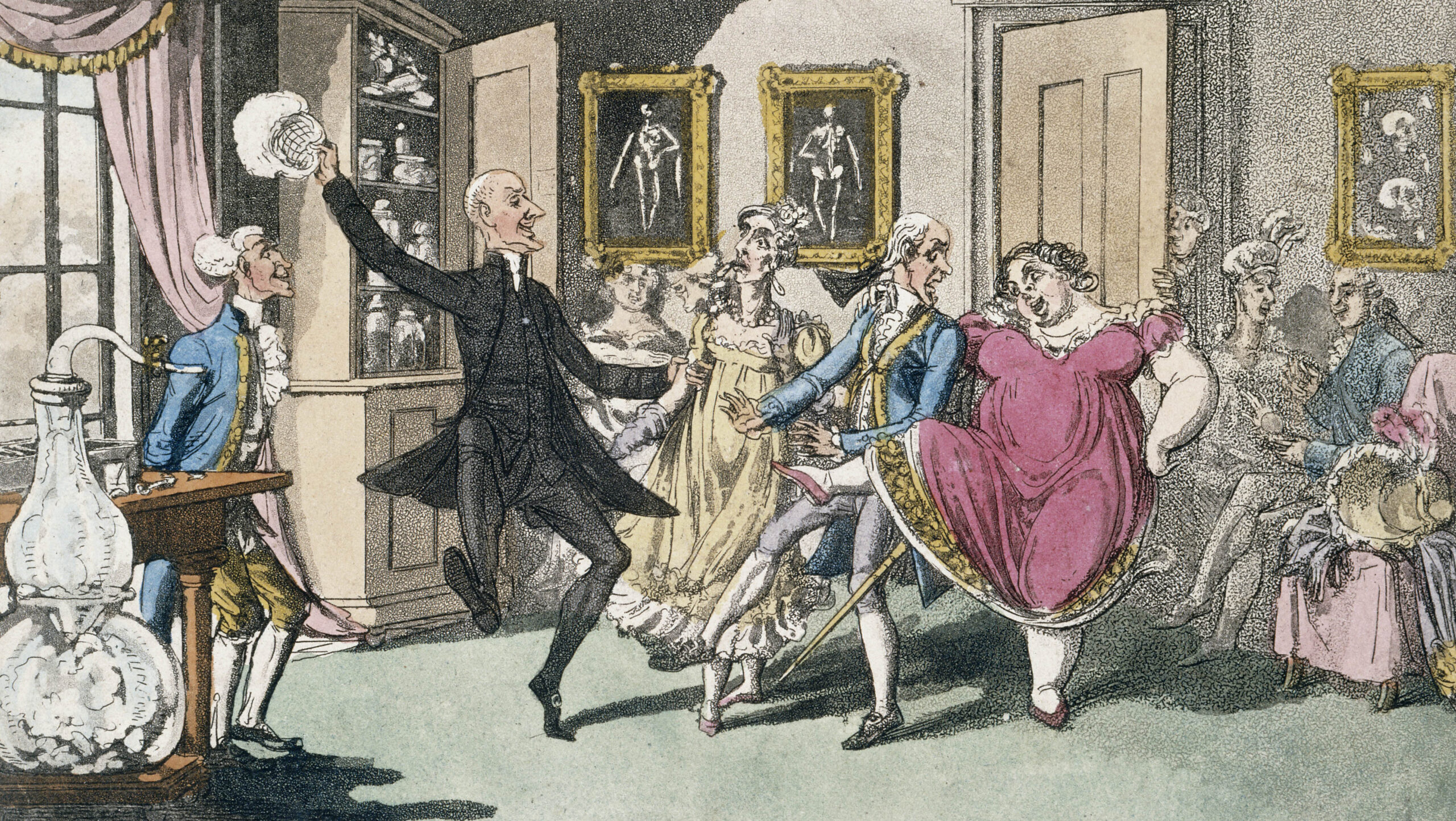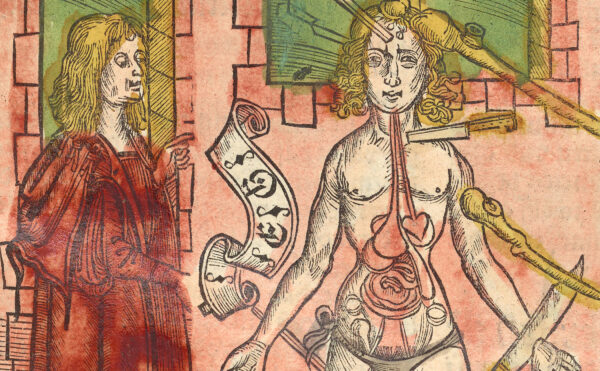On April 16, 1943, Swiss chemist Albert Hofmann synthesized lysergic acid diethylamide, a molecule he had discovered five years earlier while searching for medicinal compounds in ergot, a poisonous fungus that grows on rye kernels. While working with the synthesized acid, Hofmann accidentally touched his face. He soon felt strange and began hallucinating. In his memoir he recounted the scene: “As I lay in a dazed condition with my eyes closed there surged upon me an uninterrupted stream of fantastic images of extraordinary plasticity and vividness and accompanied by an intense, kaleidoscope-like play of colors.”
After the hallucinations had subsided, Hofmann suspected a connection between the lysergic acid and his bizarre experience that afternoon. He decided to experiment on himself. Three days later Hofmann ingested 0.25 milligrams of lysergic acid and recorded his reactions in his journal. This time his experience lasted longer and was even more surreal:
Hofmann, the first person to take purified LSD, woke up the next day without any lingering effects. Later, in his memoir, he reflected with dismay that a drug producing such a terrifying experience was being used recreationally, but at the time of discovery he believed LSD might find practical use in psychiatry and neurology. Indeed, until LSD was made almost universally illegal in the mid-1960s amid fears of toxicity and addiction, psychologist Timothy Leary and other researchers conducted a variety of experiments from the late 1950s to the early 1960s that suggested LSD could help treat alcoholism and some mental disorders.
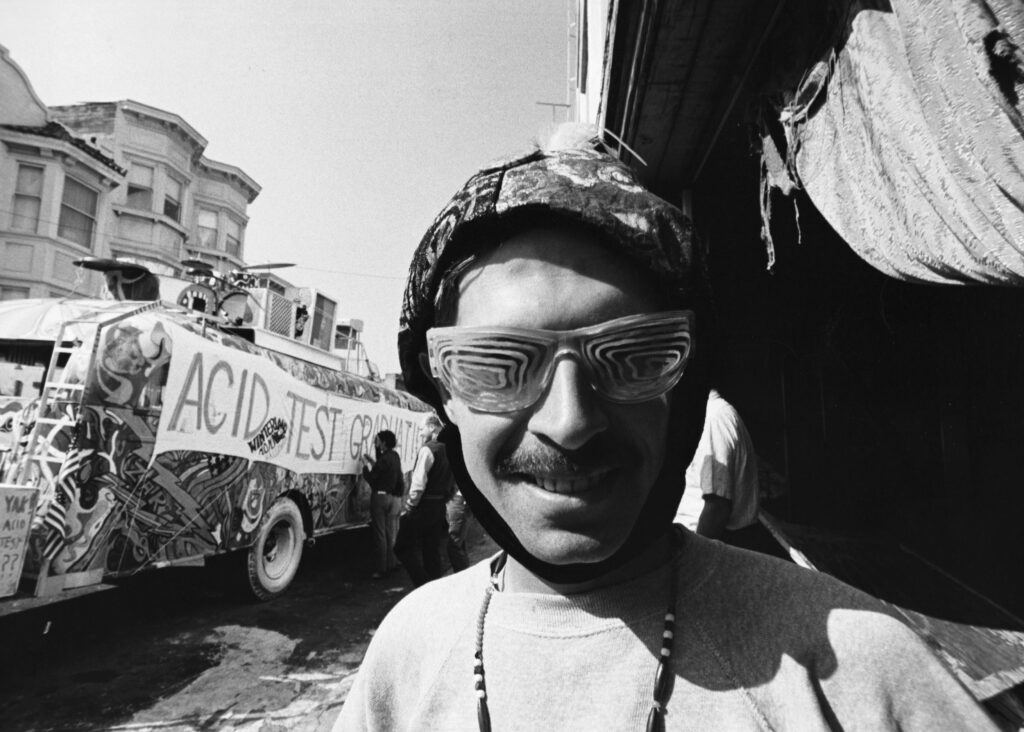
The Hermit (Anthony Dean Wells), a member of Ken Kesey’s Merry Pranksters, during the group’s LSD-fueled Acid Test Graduation party in San Francisco, 1966. Like Davy and the Romantics more than a century before, 1960s counterculture experimenters sought intellectual and spiritual enlightenment through hallucinogens.
Hofmann never gave up on finding a use for LSD and continued to take it in small doses for the rest of his life. In the closing remarks of his memoir he described the drug’s misunderstood value:
Nearly 150 years before Hofmann first ingested LSD, British chemist Humphry Davy meticulously recorded his own self-experimentation with a peculiar new drug. In his time Davy was a wildly popular chemist who discovered several elements and served as president of the Royal Society. But early in his career that future success could have been derailed by his obsession with “nitrous air,” or what he later dubbed nitrous oxide.
Like Hofmann, Davy is part of a subset of researchers who risked health and reputation to pursue knowledge through a high. And as with Hofmann, Davy’s drug pulled him further away from science into something much squishier.
In 1798 Davy, at that time a 19-year-old with little formal education, was invited to join Bristol’s Pneumatic Institution by its founder, the reformer and physician Thomas Beddoes, based on the recommendation of a mutual friend. Pneumatics, the study of gases, was still a relatively young field, one barely 40 years old. Air, it turned out, was not one substance, but was made up of many gases, including major components nitrogen and oxygen, both discovered in the 1770s. Beddoes wanted to know if any of these gases could be used to treat respiratory diseases, especially tuberculosis, which had become a major killer. He split the Pneumatic Institution into two wings: Davy would lead the experimental side, and Beddoes would run the clinic where patients could stay while undergoing treatment.
During his first year at the Pneumatic Institution, Davy became fascinated with nitrous oxide. He had read the work of American physician Samuel Latham Mitchill, who claimed that nitrous oxide was dangerous and could transmit disease. A skeptical Davy decided the only way to find the truth was to test the gas on himself.
Davy heated ammonium nitrate (most commonly used today as fertilizer), let the gas that was produced bubble through water, and then collected it in a silk bag. He dipped a finger into the bag and, after feeling no effects, lifted the bag to his face and took a deep breath.
This first inhalation and other early attempts left Davy feeling slightly giddy. Intrigued, he set out to produce more purified nitrous oxide. After a few more months of self-experimentation, and by then confident that the gas wasn’t dangerous to humans, he invited patients at the Pneumatic Institution’s clinic, fellow researchers, and even his poet friends to partake. In 1800 he published his observations in Researches, Chemical and Philosophical, Chiefly Concerning Nitrous Oxide. All of Davy’s test subjects struggled to describe their experiences. One man proclaimed, “I felt like the sound of a harp.” Davy himself was quoted as shouting, “Nothing exists but thoughts!—the universe is composed of impressions, ideas, pleasures, and pains!”
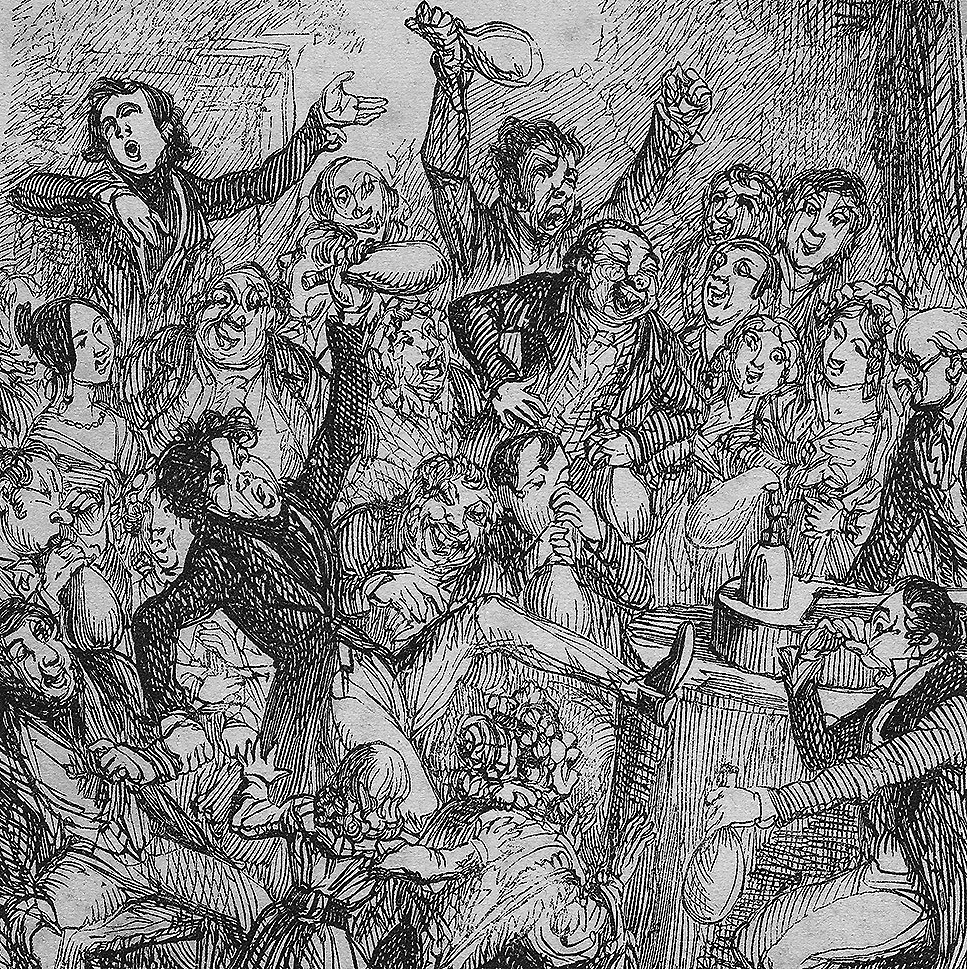
Eventually his literary friends lost interest, but Davy continued huffing nitrous oxide for hours at a time, sometimes spending his nights outside with a bag of gas, pondering the connection between the gas, his body, and the stars above him. He also tried to convince people that his obsession had practical applications. For whatever reason, some of the clinic’s patients seemed healthier after having inhaled the gas. Davy also imagined less practical uses for laughing gas, proposing it as a hangover-free replacement for alcohol. He even struck on what would become its primary use today: in his book on nitrous oxide he mentions that laughing gas “appears capable of destroying physical pain” and might be useful in surgical operations.
The public viewed Davy’s adventures differently. Newspapers and politicians lampooned Davy and Beddoes and their work at the Pneumatic Institution. Richard Polwhele’s polemical poem “The Pneumatic Revellers” portrays Davy and Beddoes as insane and hints at sexual debauchery happening behind the doors of the institute. An anonymous pamphlet titled “The Sceptic” took the criticism even further, accusing Davy of drugging women with nitrous oxide, which “gained admittance to their lovely persons.” To many outsiders Davy and his fellow inhalers appeared to be indulging in antics as wild as those of the mesmerists, who summoned the invisible forces of animal magnetism. The Anti-Jacobin Review, a conservative political magazine, continued attacking Beddoes’s credibility and forced him to abandon his research and change the name of his institution in 1802. The criticism threatened to ruin Davy’s career, but by that time he had kicked his nitrous oxide habit, moved on to the study of electricity, and was building his scientific reputation at the Royal Institution in London.
While Davy followed new pursuits, nitrous oxide floated about for the next 50 years at parties and fairs. Eventually its potential as an anesthetic was rediscovered. Today you can find it in dental offices around the world.
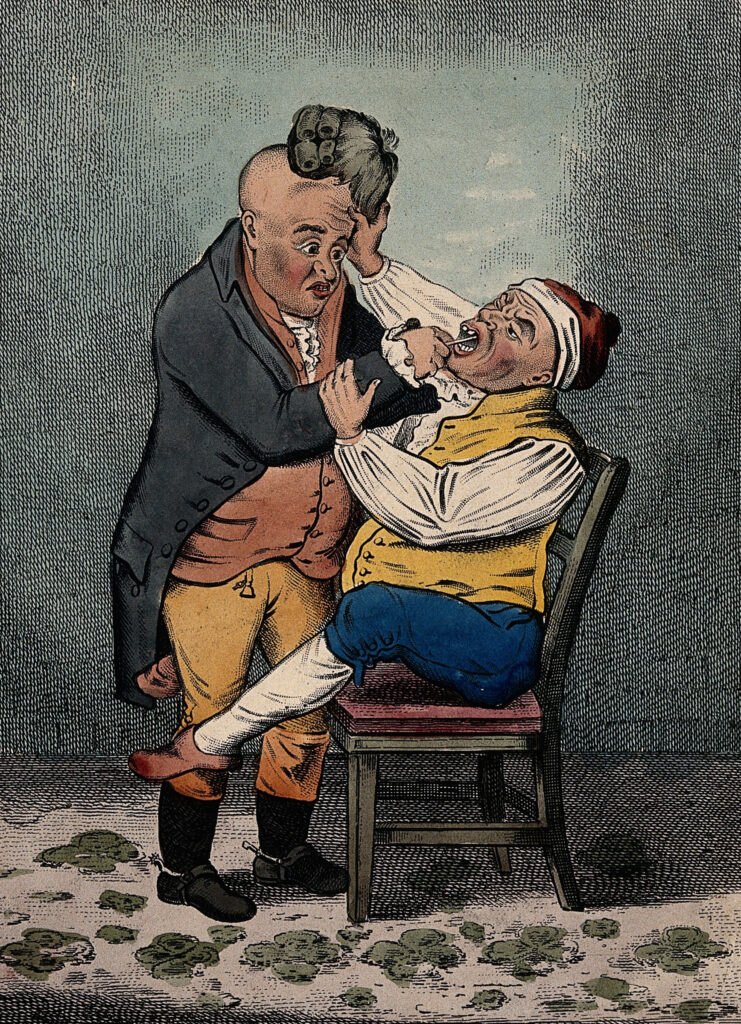
While nitrous oxide started as a Georgian-era party drug in England, it eventually was embraced for its anesthetic properties and is still used in dental offices around the world.
And that’s where I experienced the drug for the first and only time, well before I knew anything of Humphry Davy or Albert Hofmann. I was having two wisdom teeth removed, and fearful of full sedation, I chose instead nitrous oxide, which I imagined to be the safer option. I had no idea what to expect. On the day of the procedure the dentist sat me down in an operating chair, turned a nozzle, and put a breathing mask on my face. While we waited for the gas to take effect, he asked me where I went to college. I looked him straight in the eye . . . and started giggling uncontrollably. The gas had truly earned its name. I knew that my response made no sense, but I kept laughing because I found it hilarious that I was doing exactly what was expected of me.
Time seemed to jump forward, and the next thing I knew I felt a horrible grinding and creaking reverberating through my skull. My senses were dulled, but I tried to focus on the sound and figure out where I was and what was happening. Slowly, the dentist’s bent elbow came into focus, and I realized he had a pair of pliers on one of my wisdom teeth and was yanking it back and forth with incredible force. As the horror of the situation dawned on me, I felt (or imagined) intense pain shooting through my jaw. Finally the tooth sprang loose, and the dentist set to work yanking the other one out. I wanted to scream, but no sound came out of my mouth. The second tooth popped out, and time jumped forward again.
In retrospect, I don’t know what happened while I was under the influence of nitrous oxide. Did the gas stop working halfway through the operation? Did I feel real pain or did I hallucinate everything? Not knowing whether I could trust my perceptions was frightening.
Davy and Hofmann were trying to get inside their own minds, but if my experience was anything to judge by, the nature of their experimentation made their observation inherently unreliable. How useful can such work be when you can’t even trust your memory?

